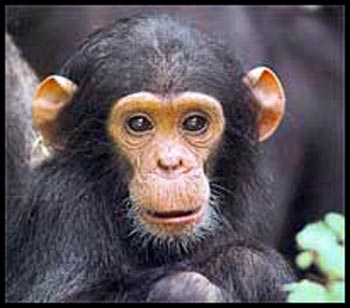
I read somewhere that a baby chimpanzee can learn to recognise itself in a mirror but apparently monkeys can't. Just imagine that moment when the penny drops.
Although that sounds like an interesting experiment, how many mother chimpanzees carry mirrors around with them?
However, our close cousins (chimps share 98.6% of our DNA) do spend a lot of time in the wild learning all sorts of things from their mothers.
For instance, chimps have learnt that termites attack anything that disturbs their nest. By inserting a twig into an opening of the nest, termites will crawl onto it. Pull out the twig and 'lunch is served'. Baby chimps watch their mothers do this and thus also learn to fish for food in this way.
Some other skills a baby chimpanzee picks up by observation, trial and error, are cracking open nuts with stones, selecting plants that are safe to eat, making a tree-bed at night and hunting small animals like monkeys.
Strong Maternal Bond
Apart from the important role of teaching her offspring 'how to be a proper chimpanzee', the mother ape also provides them with much love.
She breast feeds her baby chimpanzee for up to 4 years (comparing to humans, that's long) and during that time the bond is constantly reinforced through various physical gestures.
Chimps develop faster than us up to about 3 or 4 years of age. They start walking and clambering around trees at about 5 months, while we only start walking around 12 months of age.
Where To Find And Photograph A Baby Chimpanzee
Parks where chimpanzees still occur naturally appears elsewhere on the site. However as the mother is very protective over her baby, chances of capturing the image of a suckling baby chimp are not the best.
You could also visit an orphanage or sanctuary to try and obtain a cute baby chimp picture or two. The Jane Goodall Institute runs various projects and sanctuaries in Africa including The Gombe Stream Research Centre in Tanzania; Ngamba Island Sanctuary in Lake Victoria, Uganda; Sweetwaters Sanctuary in Kenya; Tchimpounga Sanctuary in the Republic of the Congo and the recently opened “Eden” in South Africa.
Just like humans, each chimp looks different. And just like us they show a wide range of emotions – a photographer’s delight.

